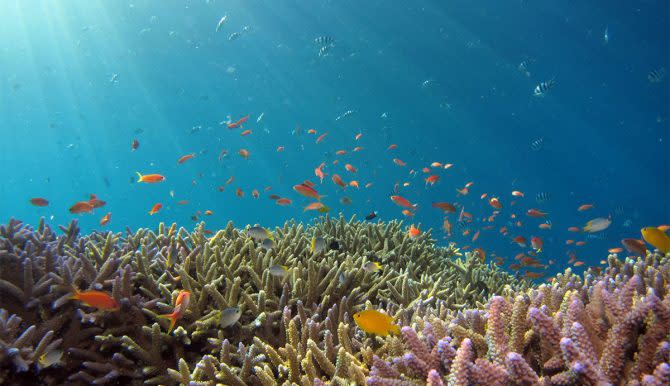Researchers Are Using Cryopreservation to Save Coral Reefs

Coral reefs are not doing well these days. We’re absolutely destroying them in a variety of ways, but researchers at the Smithsonian’s National Zoo and Conservation Biology Institute are taking a novel approach to finding a solution: cryopreservation.
It’s hard to overstate just how important coral reefs are to the health of the planet. Most everything in nature hangs in a delicate balance, big things relying on small things and vice versa. When one part of the puzzle is torn and tattered, the pieces around it don’t fit properly. Coral reefs are a cornerstone of the planetary puzzle.
“Coral reefs are some of the oldest, most diverse ecosystems on Earth, and among the most valuable,” Mary Hagedorn, a Research Scientist at the Smithsonian Institution explained. “They nurture 25 percent of all ocean life, protect coasts from storms, and add billions of dollars yearly to the global economy through their influences on fisheries, new pharmaceuticals, tourism and recreation.”
These days, though, our constant need to consume and the inherent pollution that comes with the way humans have developed methods to feed that consumption is, to put it mildly, having a bad effect on corals.
“Today, the world’s coral reefs are degrading at unprecedented rates due to pollution, overfishing and destructive forestry and mining practices on land,” Hagedorn continued. “Climate change driven by human activities is warming and acidifying the ocean, triggering what could be the largest coral bleaching event on record. Under these combined pressures, scientists project that most corals could go extinct within a few generations.”
Hagedorn has been working on the cryopreservation project for nearly two decades. Named the Reef Recovery Initiative, it’s a global project that aims to save coral reefs from what appears to be an almost inevitable fate. If we continue down the road we’re going — vomiting out enormous amounts of toxic pollutants and ignoring science — coral reefs will die. And if coral reefs die, the whole planet is in trouble.
“This novel approach involves storing and cooling coral sperm and larvae, or germ cells, at very low temperatures and holding them in government biorepositories,” Hagedorn said. “These repositories are an important hedge against extinction for corals. Managed effectively, they can help offset threats to the Earth’s reefs on a global scale. These frozen assets can be used today, 10 years or even 100 years from now to help reseed the oceans and restore living reefs.”
Cryopreservation is a lot more than just chucking a few chunks of coral into a freezer and thawing them out when the time comes. When water freezes, it expands. When cells freeze, that expansion makes reanimating them impossible. With cryopreservation, however, the introduction of cryoprotectants (a simple sugar-like substance) into the cells prevents that ice from forming. If it’s done right, cells can remain frozen but “alive” in liquid nitrogen for ages.
“Many organisms survive through cold winters in nature by becoming naturally cryopreserved as temperatures in their habitats drop below freezing,” Hagedorn said. “Two examples that are common across North America are tardigrades – microscopic animals that live in mosses and lichens – and wood frogs.”
Hagedorn’s work since 2007 has preserved over 50 species of corals that are are stored in biorepositories around the world. The method isn’t just a theory, either. Researchers have already used cryopreserved sperm to produce new coral across the Caribbean.
“The goal was to use cryopreserved sperm and interbreed corals that would not necessarily have encountered each other – a type of long-distance matchmaking,” Hagedorn continued. “Genetic diversity is maintained by combining as many different parents as possible to produce new sexually produced offspring. Since corals are cemented to the seabed, when population numbers in their area decline, new individuals can be introduced via cryopreservation. The hope is that these new genetic combinations might have an adaptation that will help coral survive changes in future warming oceans.”
The post Researchers Are Using Cryopreservation to Save Coral Reefs first appeared on The Inertia.

